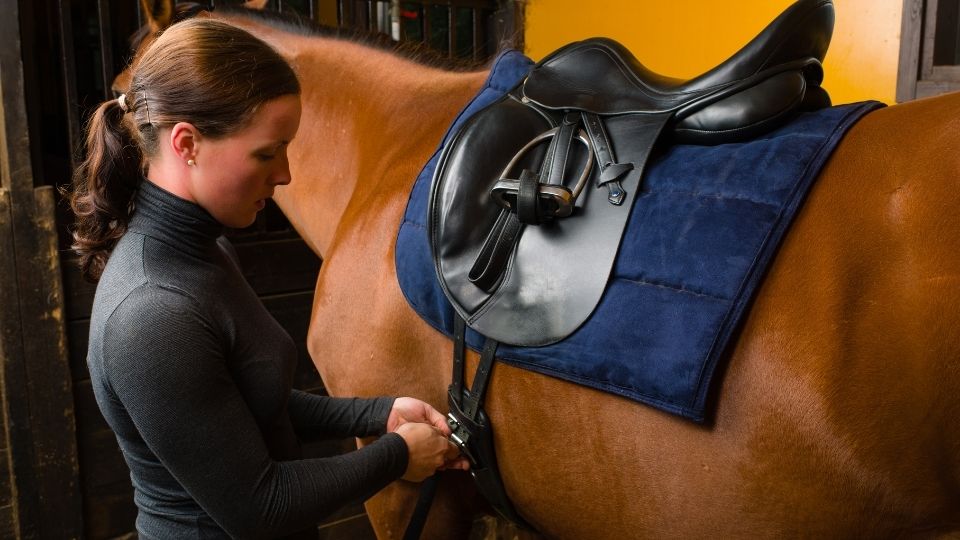
What is a Saddle Block? Shocking Insights Every Pet Owner Needs
Share
If you are a health-conscious pet owner, understanding various aspects of your pet's anatomy and care is essential. One such topic that deserves attention is the saddle block. But what exactly is it? This article dives deep into the concept, explaining its relevance not only to horses but also to other pets, and how awareness of this medical technique can lead to better health outcomes for your furry companions.

The Basics of Saddle Block
A saddle block is a common type of regional anesthesia used primarily in veterinary medicine, particularly in equine practices. The aim of a saddle block is to relieve pain in the pelvic region, effectively numbing the lower half of the body, while keeping the horse (or other animal) comfortable during a procedure. This technique can be particularly beneficial for certain surgeries or treatments, allowing for a pain-free experience.
How is a Saddle Block Administered?
Administering a saddle block involves the careful injection of anesthetic agents around the spinal nerves in the lower back. For veterinarians, it requires a high degree of skill and knowledge about the animal's anatomy, particularly in horses. Proper placement of the needle is crucial to achieving the desired effect. This technique not only minimizes pain but also reduces the amount of general anesthesia needed, which can have health benefits for sensitive animals.

Why is Knowing About Saddle Blocks Important for Pet Owners?
As a health-conscious pet owner, being informed about procedures like the saddle block enables you to make better decisions regarding your pet's healthcare. Knowing what to expect can significantly reduce anxiety during surgical procedures. You'll be better equipped to communicate your concerns and queries with your veterinarian, ultimately aiding in your pets recovery process.
Common Myths about Saddle Blocks
Many misconceptions surround the saddle block technique. Some people believe that it is a dangerous procedure that could harm the animal. In reality, when performed by a trained professional, it is a safe method that can offer substantial relief from pain. Another common myth is that saddle blocks are only applicable to horses. In fact, this technique can also be modified for use in other large animals, depending on their anatomical structure.

The Health Benefits of Saddle Blocks for Pets
One of the most remarkable aspects of a saddle block is its capacity to improve post-operative recovery times. When pets can experience less pain during proceduresthanks to localized anesthesiathey tend to recover quicker. Moreover, reduced anxiety levels lead to improved overall well-being, as animals are less stressed when being treated.
Incorporating Knowledge into Practice
As a responsible pet owner, you should seek out veterinary practices that utilize new technologies and techniques, such as saddle blocks. This might involve asking your veterinarian about their experience with this technique and discussing how it is applied in the context of your pet's needs. To get a better understanding of where saddle blocks fit into the larger context of equine anatomy, you might want to check this horse breeds guide for more insights.

In Conclusion
Understanding what a saddle block entails is not just shocking informationits a remarkable revelation that could lead to better choices for your pets' healthcare. With this knowledge, you can engage more confidently with veterinary professionals and ensure your furry friend receives the best possible care. So the next time your vet mentions a saddle block, you won't just be nodding in confusion; you'll have the tools to make informed decisions.
FAQs about Saddle Blocks
1. Are saddle blocks safe for all pets?
While saddle blocks are generally safe when administered by a qualified veterinarian, their applicability can vary between species. Always consult your vet for personalized advice.
2. How long does the numbness last after a saddle block?
The duration of numbness can vary, but it usually lasts several hours. Your veterinarian will provide guidelines specific to the procedure.
3. Can I request a saddle block for my pet before a procedure?
Absolutely! If youre concerned about pain management during a procedure, discuss the possibility of a saddle block with your vet.
As an Amazon Associate, I earn from qualifying purchases.
